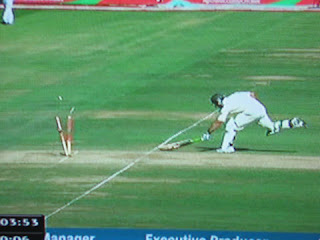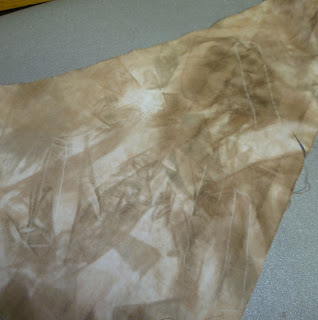The last 2 days i have been grateful I have creativity to get me into a focus where I can stop thinking about pain. Suffice it to say, I have been hurting, but I have also had fun creating.
and about the joy in service thing? I managed to go up and down looking for documents a Certain Lad needed for an application he is trying to fill. and you know, it isn't all one sided, at one point in the emails and texts flying back and forth he said something that really made me laugh.
anyway... you know I like to tell you stories about the development of a work.
Well...quite a while back - years - the CQ group had a challenge with the theme Breakthrough. I had an idea, but not the time to do it properly.
Fast forward...CQ is participating in a challenge about Diversity in Europe. We need 60 little quilts 20cm square to make up one big piece which expresses Britishness. I realised that idea would work and since then have a better idea of how to do it. And besides it is more like the size I like working with.
So...
The idea for Breakthrough was a Wicket - a cricket ball breaking through the stumps. This was shortly after England won the Ashes here in the UK.
I even took some photos of a stumping on telly with my camera (like the ones above). So, of course, this could also represent Britishness. And since the England team have continued to be a winning side, there is no chagrin related!! Something British to be proud of.
and the development -
Step 1 - green stripe fabric discovered in cupboard (Some sample pack from Oakshots which I can't remember why I was given).
Step 2 - colour the stripes with water colour pencils so it is more like a cricket field.
Step 3 - seal with textile medium
Step 4 - get annoyed that the textile medium is too shiney. Go look for sandpaper in DH's cupboard. Sand furiously.
Step 5 - draw in the wicket creases as seen from the air - real and practice ones. Research setting the field and find one image to get an idea where to put white dots representing the fielders.
Step 6 - look for wicket stump fabric. Find a cloth I used to wipe up walnut ink. How clever to be a saver rather than a thrower away-er! Trace stumps cut from inspiration image.
Step 7 - find a hand dye fabric with one spot that will work for a cricket ball.
Step 8 - use water colour pencils to develop the images. and decide since it isn't going to be washed, don't used textile medium.
Step 9 - put fusible on the back of the images. just at the point of fusing them. stop and think.
Step 10 - I have admired the graphic quality of Terry Grant's work. So, I decide to fuse the images to a scrap of thin black wool - see saver up above. Cut them out and then put fusible on the black.
Step 11 - think about not having them in the centre because not enough of the field arrangement in the background will be seen, so may not be obvious enough. arrange them again and fuse.
Step 12 - make white french knots so the fielders will be more noticable. Stitch some of the 'stitching' on the ball so it looks more realistic. hand stitch round the wicket patches to set them out from a distance, too.
This is the sandwich photo - Step 17. I get too involved at this point to remember to do photos. :-}
Step 13 - Go to bed wondering if it looks too much like Terry Grant had made it. and thinking something has to go in the lower left corner. Perhaps the 3 lions?
Step 14 - Next day. Look up cricket symbols because I realise the 3 Lions are probably trademarked or something. Images have some umpires, so I realise an umpire with the OUT hand signal raised would also do.
Step 15 - try to sketch my hand in the position, but realise I am never going to get it to look like a man's hand without a man's hand to look at.
Step 16 - borrow an umpire's hand from a photo and tweak it a bit in Paint Shop Pro. This time use fused paper over the black wool. Include a W which is the symbol for recording a wicket in recording the stastistics. (See above in the Sandwich photo)
Step 17 - Sandwich the quilt and do a bit of stitching to hold it together and to highlight a bit more.
Step 18 - Satin stitch in black round the edge.
Done. and here is 'Cricket'. Quite British.
Not so hard to ignore pain when you have something else to think about.










1 comment:
My mother suffered from migraines but I've been lucky to escape that gene. She went to bed for three days so your creativity is all the more impressive for breaking through the barrier.
Post a Comment